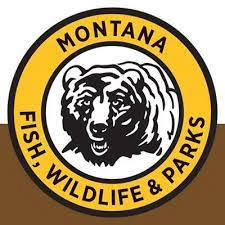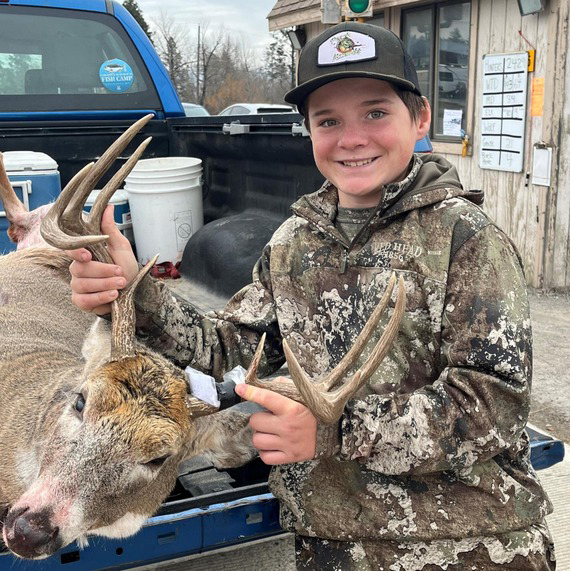

|
Game check station results for northwest Montana through first three weekends
Montana’s general hunting season is hitting the midway point and the overall harvest is expected to increase with the onset of the deer breeding season.
The general deer and elk hunting season concludes Dec 1, 2024.
The deer breeding season, known as the “rut,” typically begins in early-to-mid November.
So far this season, more hunters have reported harvesting more deer and elk at the Montana Fish, Wildlife & Parks' regional game check stations in northwest Montana compared to last season. Overall through the first three weekends of the season, more than 5,400 hunters have been checked at the stations and the percentage of hunters with game has been 8.6 percent compared to 7.1 percent a year ago.
Check stations are open on weekends during general season from 10 a.m. to approximately 1.5 hours past sunset. The regional stations are located at U.S. Highway 2 West of Kalispell, Montana Highway 83 north of Swan Lake, Highway 200 west of Thompson Falls, and Highway 93 near Olney.
Hunters must stop at any check station they encounter whether they harvested an animal or not. The counts at the stations represent a sampling of the harvest and do not represent the complete number of animals taken.
A table linked below summarizes the latest check station results at northwest Montana check stations.
Chronic Wasting Disease
Chronic wasting disease (CWD) was recently detected in a white-tailed deer in Kalispell. This is the first time CWD has been detected in a wild herd in Hunting District 170.
FWP is increasing the availability of antlerless white-tailed deer hunting licenses in HD 170 following the detection. Hunters can now buy two 170-00 Deer B licenses over the counter. Previously, hunters were only allowed to buy one.
The 170-00 Deer B License allows hunters in Hunting District 170 (not valid on Kuhns Wildlife Management Area) to harvest a white-tailed deer without antlers or with antlers less than 4 inches long as measured from the top of the skull.
Following Montana’s CWD Management Plan, FWP is increasing harvest opportunity in the district to assess the prevalence of CWD in the area. The CWD management plan is a strategy based on the best available science and developed by FWP to monitor, control, and prevent the spread of CWD among wild deer, elk, and moose populations.
CWD Testing
CWD sample submission is voluntary in most places in Montana.
All hunters in HD 170 are encouraged to get their harvested deer and elk tested for CWD.
There are new mandatory testing requirements for tags associated with CWD management near Libby. Testing is required for all animals harvested using the Deer B License 199-20 in HDs 100, 103 and 104, or Deer Permit 103-50 in HD 103.
FWP strongly recommends that hunters receive a negative CWD test result before bringing their deer, elk or moose to a meat processor or donating it to a foodbank.
If the animal tests positive for CWD, FWP will advise the hunter on proper carcass and meat disposal and give instructions on how to request a replacement license.
How to Submit Samples for Testing
All hunters who want their harvested animal sampled can submit samples themselves by following steps on the Montana CWD Submission Guide or by visiting a CWD Sampling Station.
In northwest Montana, hunters can bring their harvested animal to the FWP office in Kalispell, Monday – Friday, 8 a.m. – 5 p.m. for sample collection. Reservations are not required and sampling will be done first-come, first-serve.
A CWD sampling station in Libby will operate Saturdays, Sundays, and Mondays, 10 a.m. to 1.5 hours past sunset, and Tuesdays from 1 p.m. to sunset at the Montana Department of Transportation shop on U.S. Highway 2 south of town.
Hunters who want their animal sampled should leave 2 to 4 inches of the neck below the low jawbone and base of the skull to ensure lymph nodes are present and not inadvertently left with the carcass. Samples cannot be collected from frozen heads.
Carcass Disposal
Carcass parts, such as brain, eyes, spleen, lymph glands, and spinal cord material, should be left at the kill site when possible. If the animal is transported for taxidermy or meat processing, the brain and spinal tissue must be bagged and disposed of in a Class II landfill.
A carcass may be transported within the state regardless of where it was harvested if the carcass parts are disposed of in a landfill after butchering and processing.
Dumping carcasses is illegal, unethical, and can spread diseases, including chronic wasting disease. This requirement applies to all deer, elk, and moose carcasses wherever in the state they are harvested by hunters or as vehicle-killed salvage.
Northwest Montana (Region 1) Reminders